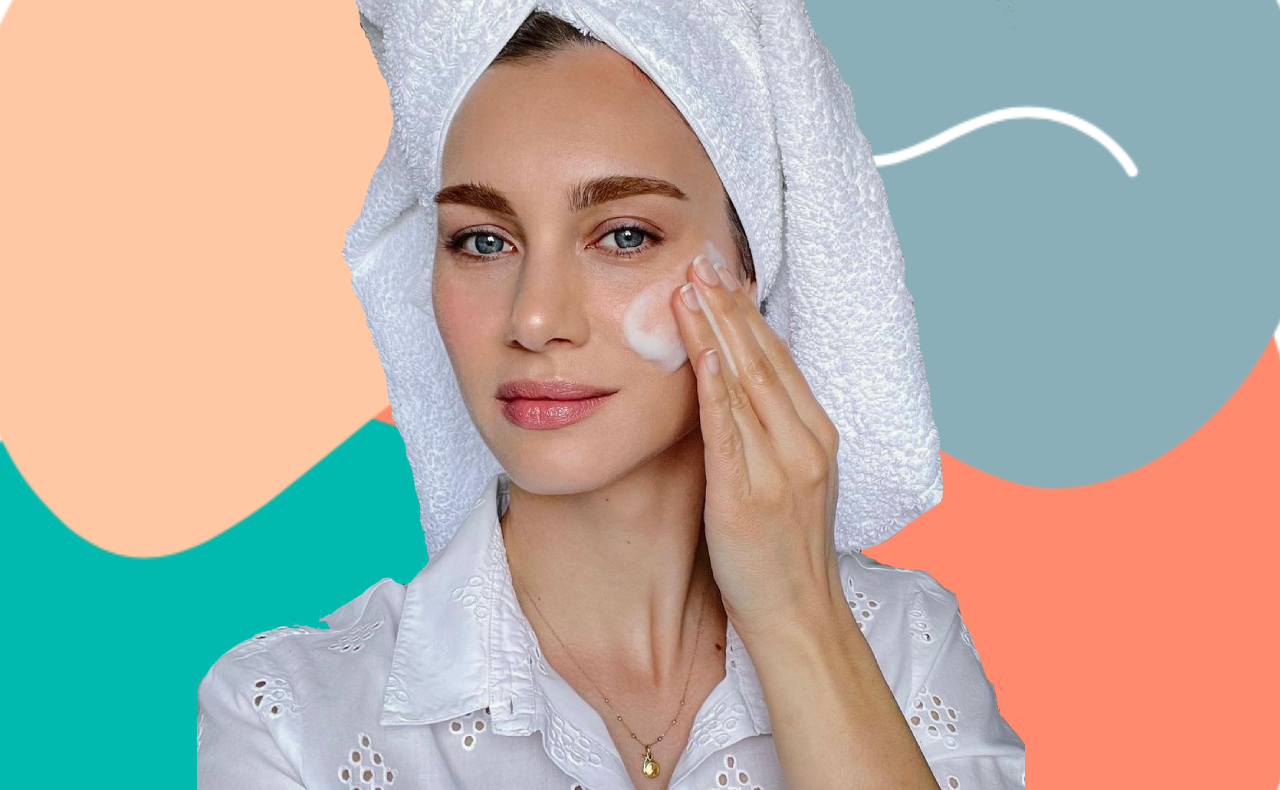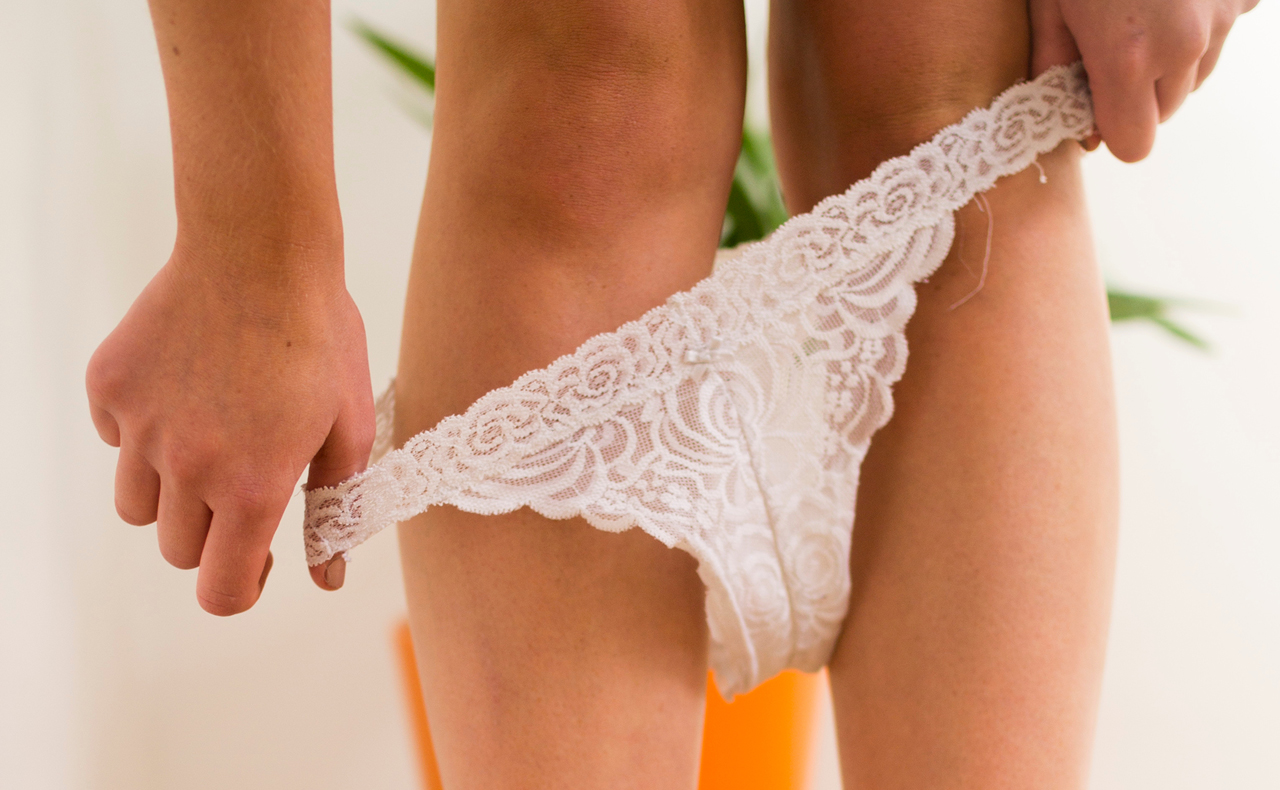Applying acid to sensitive skin sounds scary, but lactic is the acid with the gentle touch. It’s derived from milk, so it has a moisturising, soothing elemnt that can actually calm an inflamed complexion. If you suffer from rosacea, lactic is definitely your acid answer, as it neutralises and dulls redness. Intrigued? Us too. We spoke to Fiona Tuck, Skin and Nutrition Expert, to find out every damn detail.
RELATED: Why you need these calendula-infused products now
RELATED: The lowdown on Korean skin care
What is lactic acid?
Lactic acid is an alpha hydroxy acid (just like its fellow skin care saviour: glycolic ). “Lactic acid is used in skincare as a hydrating ingredient and as a hydroxy acid to aid exfoliation of the skin resulting in a smoother, clearer and brighter complexion,” Fiona explains.
How does lactic acid work?
“Lactic acid exfoliates the surface of skin by gently breaking down the material that holds or ‘glues’ dead skin cells together. This allows the surface of the skin to shed naturally as it once did, encouraging up new, healthy cells full of moisture,” Fiona says. UM, yes please!
How does lactic acid differ from glycolic and salicylic acid?
Turns out, size matters when it comes to hydroxy acids. “The size of the lactic acid molecule is what differs from glycolic and salicylic. The glycolic acid molecule is smaller than lactic meaning it may exfoliate quicker and whilst beneficial for thicker or oilier skins it may cause some initial peeling or sensitivity in finer skins,” says Fiona. “Lactic acid, due to its larger molecular size tends to be more suitable for skin that is drier or more fine skinned individuals. Salicylic is a beta hydroxy acid and particularly benefits oily and acne-prone skin as it helps to loosen blackheads and is an effective decongesting treatment and is also anti-inflammatory.”
Can lactic acid still irritate your skin?
In short: yes. It all depends on the strength you use. “If you use lactic acid at a strength that is not suitable on a skin that does not need extra exfoliation it could irritate. This can be minimised if the formulation contains calming and hydrating ingredients and developed at a pH that will not cause irritation,” explains Fiona. So be cautious and make sure to do your research.
How often should you use lactic acid in your skin care routine?
“This really depends on individual skin types, concerns and other skin care ingredients also need to be taken into consideration,” says Fiona. “It is always best to seek professional advice rather than self-diagnose. Many people can over exfoliate the skin which can strip the natural protective barrier of the skin resulting in tightness and dryness. Some people may benefit from using a gentle lactic acid product daily whilst others may need it less frequently.”
What is the best way to incorporate lactic acid into your skin care routine?
“Lactic acid may be used in cleansers to gently cleanse and exfoliate the skin or it can be used in a serum to refine and brighten,” Fiona says. “The key is not to over exfoliate by using multiple products with multiple exfoliating ingredients e.g. lactic cleanser, hydroxy acid scrub and a serum or moisturiser that also contains hydroxy acids.”
What are the best kinds of skin care products to use that contain lactic acid?
“If you are looking for efficacy of exfoliation a pH-correct formula would have a pH between 3 and 4 in concentrations between 5 and 12%,” says Fiona. “The lower the pH and the higher the % the stronger the product. The natural pH of the skin is around 4.5 – 5.5. If you use a product with a pH lower than this everyday there is a potential to cause skin sensitivity and dryness. The stronger products are therefore not always the best to use daily and are often best used in professional treatments.”
Products to try…
Dermalogica Age Smart Skin Resurfacing Cleanser

Dermalogica Age Smart Skin Resurfacing Cleanser
This cleanser contains lactic acid for exfoliation, vitamin E to condition the skin and rose flower oil to soothe.
Ultraceuticals Ultra Gentle Exfoliating Gel

Ultraceuticals Ultra Gentle Exfoliating Gel
Lactic acid is blended with salicylic acid, eucalyptus leaf oil and jojoba extract in this gentle exfoliating gel.
Ultraderm Skin Refining Clay Mask

Ultraderm Skin Refining Clay Mask
This mask purifies, clarifies and revives your skin. Lactic acid works to dissolve dead skin cells while mineral clays draw out toxins, minimise the appearance of pores and normalise sebum production.
Lush Happy Hippy

This shower gel is made up of lactic acid, frankincense oil, bergamot oil, grapefruit oil, grapefruit water and grapefruit juice.
Synergie Skin Practitioner Exfol-X

Synergie Skin Practitioner Exfol-X
This serum is one heavy duty exfoliator! It’s a potent blend of over 20 per cent alpha and beta hydroxy acids (lactic, malic and salicylic acid).





Great information very descriptive
Believe in doctors Eromo
I haven’t used lactic acid as a topical product. I’m more familiar with lactic acid build up in the muscles!
I didn’t even know that something like this exist. Good to know!
Oh yes, that rings a bell.
Isn’t that a bad thing when there is lactic acids in the muscles?
This sounds like it would irritate my skin.
Lush happy hippy sounds nice
Never used it before
I’ve got the Ordinary here with Latic Acid 10%, my skin feels smooth. I can’t see any difference to lines or sun damage. Not can I see it has been gently exfoliated.